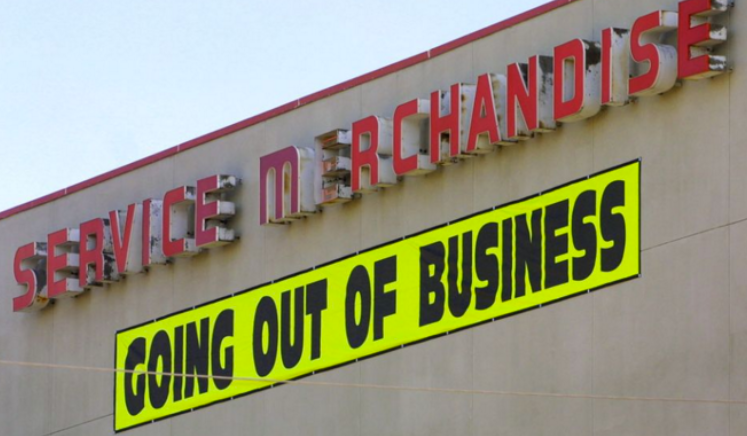Remember When: Service Merchandise - Williamson Source

For 68 years, Service Merchandise called Tennessee home, moving their national headquarters to Brentwood in the early 1980s. They were one of the first corporations to settle into the Cool Springs area. During the 1970s and 1980s they were the number one retail catalogue showroom store in the country, topping sales at four million dollars in 1994.
Beginning in 1934 in Pulaski, Tennessee as a five-and-dime store, Service Merchandise grew to over 400 showroom stores before going into bankruptcy in 2002. They offered fine jewelry, sporting goods, electronics, housewares, toys, and even some clothing.
Their ordering process through a "Silent Sam" on-line cash register system in their stores allowed them to keep shrinkage down and pass the savings on to the consumer. It was a unique system that was also fun. You put in your order in at one place, and it came out on a conveyer belt at the other end.
Founded by Harry and Mary Zimmerman, they both passed away in 1986, and that was possibly the beginning of the end, even though the running of the stores had moved over to their son, Raymond, many years before. The retail world was beginning to change, and many catalogue businesses had already left the business.
At their height, Service Merchandise was in 37 states. They also supplied prize merchandise to television shows like Wheel of Fortune and The Price is Right. Then stores like Walmart, Bed Bath and Beyond, Best Buy, and Circuit City started to chip away at their market.
The purchase of H.J. Wilson's, for their strong presence in the South, looked like a good idea, but 60% of their stock was not compatible. Incompatible merchandise had to be sold off. Then, Service Merchandise began shifting their stock as "big box" stores gained strength.
Jewelry took up three percent of the space on the sales floor, and accounted for 25% of sales. Gary Witkin, who replaced Raymond Zimmerman as president, chose to bring in more expensive jewelry lines. A former vice president, who had worked for the company for years, told Nashville Business Journal, that he never really understood the Service Merchandise customer. Price was key, they didn't want high priced jewelry.
While Raymond Zimmerman had embraced technology early, other business decisions, in retrospect, were made to try to plug what was soon to become a sinking ship. In 1985, Zimmerman was quoted in Business Week as saying, "We'll try anything."
Many of those things worked, as they hit the height of sales in 1994, only to take a $96.1 million loss in 1997. And another loss of $110.3 million in 1998. They became a company with no clear vision of who they were. Their business model was out of date.
Economic factors didn't help. They filed for bankruptcy in March of 1999, and September 11, 2001 put the nail in the coffin. Raymond Zimmerman resigned in 2002. They closed their doors not too long after.
From start to finish, Service Merchandise is a case study of the beginning, maturity, and end of a business model cycle. With business moving so swiftly these days, perhaps it is one we should all learn from. They grew quickly, shined brightly, and then burned out after losing their way in a changing market.
More Stories Honoring Brentwood's 50th Anniversary


Comments
Post a Comment